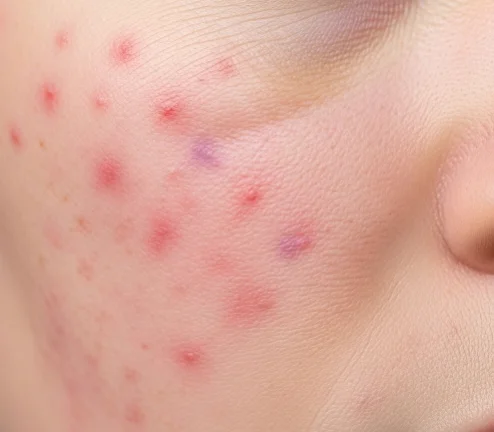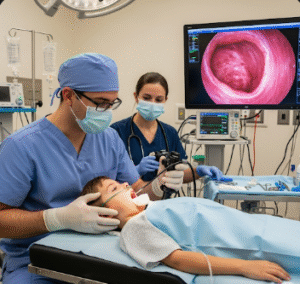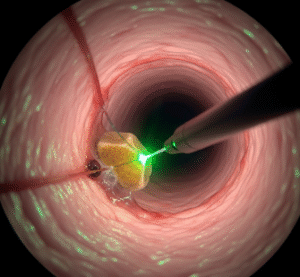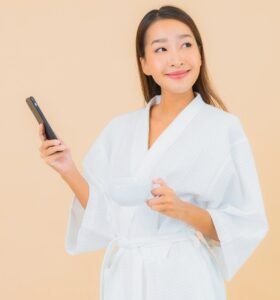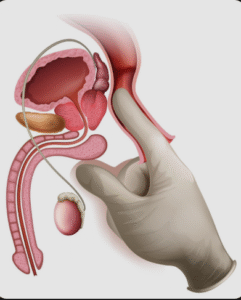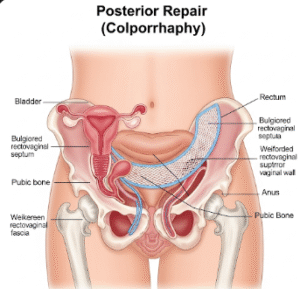What it is
Post-inflammatory erythema (PIE) in Korea refers to the persistent red or pink marks that remain on the skin after inflammation, most commonly following acne, cosmetic procedures, or skin injuries.
Unlike hyperpigmentation, which is caused by excess melanin, PIE occurs due to dilated or damaged blood vessels beneath the skin’s surface. These vascular marks often appear on fair to medium skin tones and may linger for weeks or months without treatment.
→ In Korea, PIE is treated with a combination of vascular lasers, skin-calming products, and regenerative therapies, focusing on both cosmetic improvement and skin health restoration.
• PIE is not a scar, but if left untreated, it can take months to fade naturally.
• Korean dermatology places strong emphasis on PIE management because smooth, even-toned skin is considered essential in beauty culture.
Why it’s done
Patients seek post-inflammatory erythema treatment in Korea for several reasons:
→ Faster healing: Natural fading can take months; treatment accelerates recovery.
→ Aesthetic improvement: Red marks are highly visible, especially on lighter skin.
→ Acne recovery: PIE often accompanies acne, so patients want clear, blemish-free skin.
→ Psychological well-being: Red patches can affect confidence and self-image.
→ Prevention of worsening: Ongoing inflammation without treatment may prolong erythema.
Alternatives
If professional treatment is not chosen, some alternatives and supportive options include:
• At-home calming creams → Centella asiatica, niacinamide, and green tea extracts can reduce redness gradually.
• Over-the-counter treatments → Anti-redness serums or moisturizers help but work slowly.
• Makeup camouflage → Concealers or CC creams with green undertones can mask erythema.
• Cold compresses → Provide temporary relief for inflamed skin.
→ While these can help, Korean medical treatments are more effective and targeted for long-lasting improvement.
Preparation
Before starting PIE treatment in Korea, preparation ensures safety and optimal results:
- Dermatologist consultation → Determines whether marks are PIE, post-inflammatory hyperpigmentation, or scars.
- Skin evaluation → Identifies skin type, sensitivity, and severity of erythema.
- Avoid sun exposure → Redness may worsen with UV damage; SPF protection is recommended before treatment.
- Stop irritant skincare → Retinoids, acids, and harsh scrubs should be paused.
- Clean skin → No makeup or heavy creams before clinical treatment.
→ Korean clinics often recommend starting with barrier-strengthening skincare before advanced procedures.
How it’s done
Post-inflammatory erythema treatment in Korea usually involves several approaches, sometimes combined:
- Laser therapy
- Vascular lasers (PDL, V-beam, IPL) target blood vessels causing redness.
- Pico and Q-switched lasers may be used for mixed erythema and pigmentation.
- Topical treatments
- Prescription creams with anti-inflammatory or vasoconstrictive ingredients.
- Soothing formulations with centella asiatica, arbutin, or azelaic acid.
- Microneedling with serums
- Stimulates skin healing and reduces lingering redness.
- Often combined with growth factors or PRP (platelet-rich plasma).
- LED light therapy
- Red and blue LED lights reduce inflammation and calm vascular activity.
- Cooling masks
- Applied after treatments to soothe the skin and minimize irritation.
→ Sessions typically last 20–45 minutes, with results visible after 3–5 treatments spaced 4–6 weeks apart.
Recovery
Recovery after PIE treatments in Korea is usually mild:
• Laser treatment → Temporary redness or swelling for 1–2 days.
• Microneedling → Slight flaking or sensitivity for 3–5 days.
• LED therapy → No downtime, only immediate calming.
• Topicals → Minimal side effects, provided they are used under medical supervision.
→ Most patients can resume normal activities right away but must follow strict sun protection and gentle skincare routines.
Complication
Though generally safe, PIE treatment can have some complications if not managed properly:
- Temporary increased redness → Especially after vascular laser sessions.
- Swelling or bruising → Possible when targeting deeper blood vessels.
- Hyperpigmentation → In darker skin tones, laser treatment may cause dark marks.
- Dryness or irritation → From overuse of active topical products.
→ In Korea, these risks are minimized through careful laser settings, customized skincare, and strong follow-up care.
Treatment option in Korea
Korea is globally recognized for its expertise in vascular and pigmentation treatments, making it one of the best places for managing PIE:
→ Laser technology → Leading clinics use V-beam, IPL, and Pico lasers, highly effective for erythema reduction.
→ Integrated skincare → Korean aftercare emphasizes calming products rich in centella asiatica, hyaluronic acid, and peptides.
• Combination approach → Clinics often pair laser therapy with LED healing, microneedling, or PRP for enhanced results.
• Medical tourism → Many patients travel to Korea for PIE treatment due to its reputation for safe, effective, and quick solutions.
• Aesthetic philosophy → Korean dermatology focuses not only on reducing redness but also on achieving clear, smooth, and radiant skin, aligning with cultural beauty standards.
→ With advanced technology, customized protocols, and expert dermatologists, Korea offers some of the most effective post-inflammatory erythema treatments in the world, restoring confidence and skin health.

